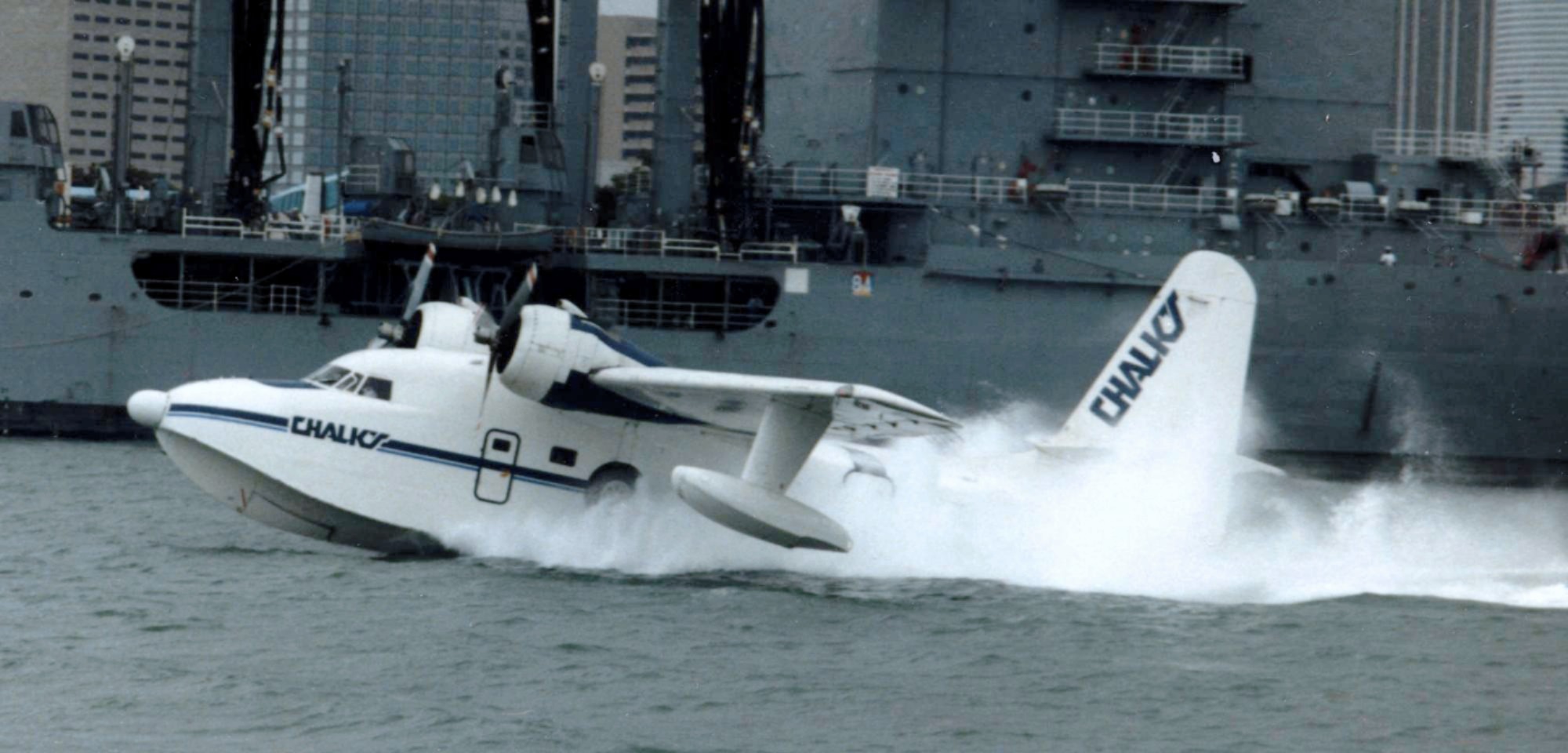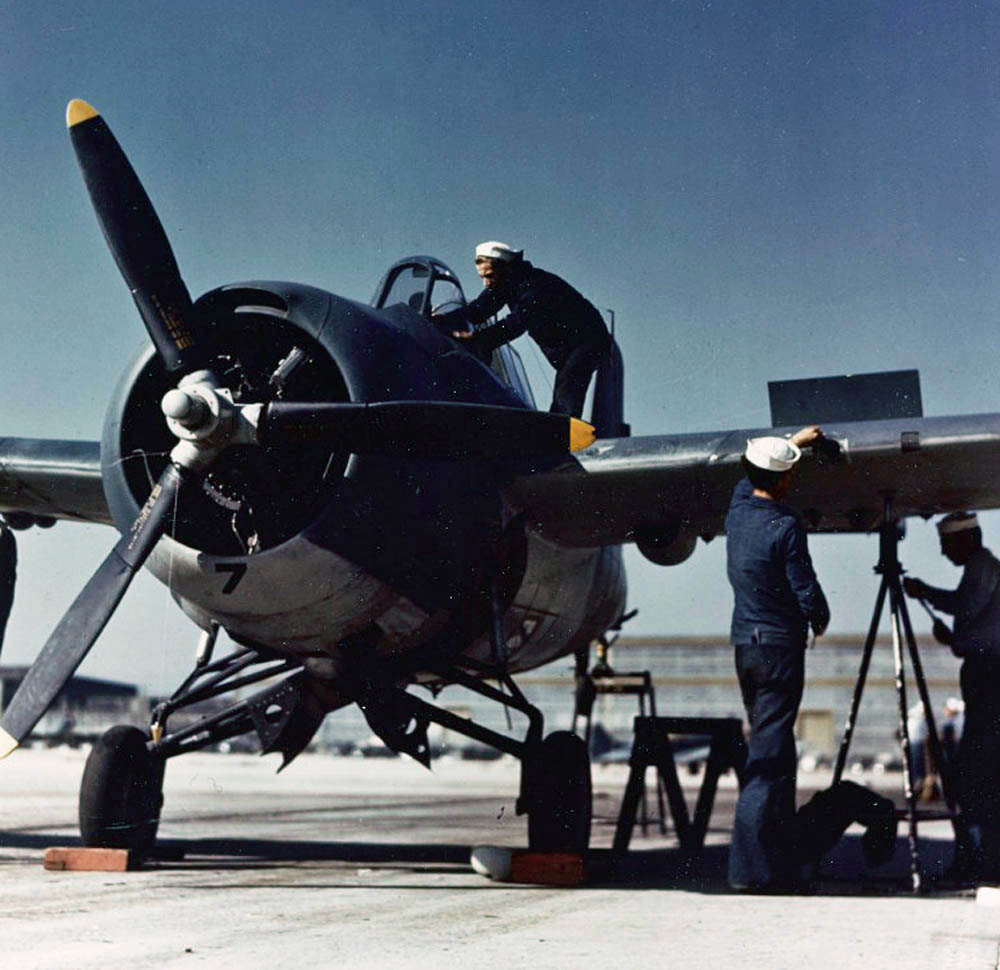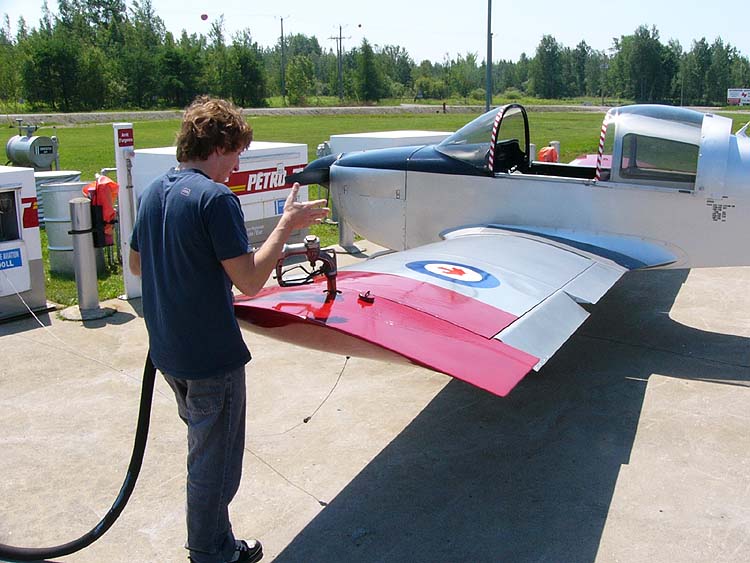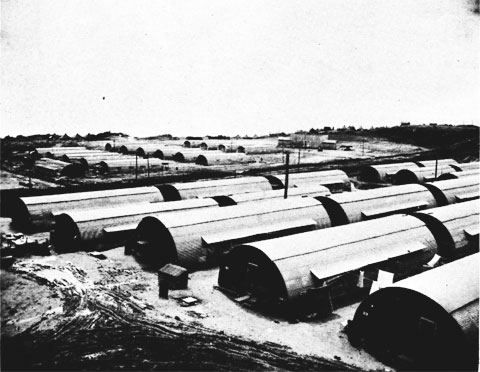|
Naval Base Puerto Princesa
Naval Base Puerto Princesa, Naval Base Palawan, was a United States Navy base built during World War II at Puerto Princesa on Palawan Island, Philippines, after the Invasion of Palawan on February 28, 1945. Puerto Princesa Bay offered an excellent base for fleet anchorage. At the naval base, US Navy Seabees built: a seaplane base, carrier aircraft fighter plane repair depot, land airfield and other base facilities. History Palawan Island is an eastern island of the Philippines and is the fifth largest of the Philippine islands. The island is 265 miles long and about 25 miles wide. The 84th Seabee Construction Battalion arrived at Puerto Princesa on March 12, 1945. Most of the captured Japanese facilities had been destroyed in bombing raids. One captured runway was easily repaired and was selected for repair and lengthening. The 84th Seabee Construction Battalion unloaded and loaned the needed equipment to the United States Army Engineers to work on the runway. The 84th Seabee ... [...More Info...] [...Related Items...] OR: [Wikipedia] [Google] [Baidu] |
South East Asia
Southeast Asia is the geographical United Nations geoscheme for Asia#South-eastern Asia, southeastern region of Asia, consisting of the regions that are situated south of China, east of the Indian subcontinent, and northwest of the Mainland Australia, Australian mainland, which is part of Oceania. Southeast Asia is bordered to the north by East Asia, to the west by South Asia and the Bay of Bengal, to the east by Oceania and the Pacific Ocean, and to the south by Australia (continent), Australia and the Indian Ocean. Apart from the British Indian Ocean Territory and two out of Atolls of the Maldives, 26 atolls of the Maldives in South Asia, Maritime Southeast Asia is the only other subregion of Asia that lies partly within the Southern Hemisphere. Mainland Southeast Asia is entirely in the Northern Hemisphere. Timor-Leste and the southern portion of Indonesia are the parts of Southeast Asia that lie south of the equator. The region lies near the intersection of Plate tectonics, ... [...More Info...] [...Related Items...] OR: [Wikipedia] [Google] [Baidu] |
Seaplane
A seaplane is a powered fixed-wing aircraft capable of takeoff, taking off and water landing, landing (alighting) on water.Gunston, "The Cambridge Aerospace Dictionary", 2009. Seaplanes are usually divided into two categories based on their technological characteristics: floatplanes and flying boats; the latter are generally far larger and can carry far more. Seaplanes that can also take off and land on airfields are in a subclass called amphibious aircraft, or amphibians. Seaplanes were sometimes called ''hydroplanes'', but currently this term applies instead to Hydroplane (boat), motor-powered watercraft that use the technique of Planing (boat), hydrodynamic lift to skim the surface of water when running at speed. The use of seaplanes gradually tapered off after World War II, partially because of the investments in airports during the war but mainly because landplanes were less constrained by weather conditions that could result in sea states being too high to operate seaplanes ... [...More Info...] [...Related Items...] OR: [Wikipedia] [Google] [Baidu] |
Puerto Princesa Airfield
Puerto Princesa International Airport is an airport serving the general area of Puerto Princesa, located in the province of Palawan in the Philippines. It is classified as an international airport by the Civil Aviation Authority of the Philippines. The airport is the main gateway to the Puerto Princesa Underground River, a UNESCO World Heritage Site and one of the New 7 Wonders of Nature. History World War II The airport was built by American prisoners of war during the World War II from August 1942 to September 1944. It was used to accommodate large Japanese transport aircraft to complement the grass airstrip south of the present-day location of NCCC Mall Palawan in Lacao Street. The airstrip was constructed by hand by the POWs using crushed corals for illuminating night landings. The finished airfield has an area of with two runways. On December 14, 1944, occupying Japanese soldiers herded 150 remaining American POWs that constructed the airstrip into air raid trenches, d ... [...More Info...] [...Related Items...] OR: [Wikipedia] [Google] [Baidu] |
USS Pollux (AKS-4)
USS ''Pollux'' (AKS-4) was a ''Castor''-class general stores issue ship commissioned by the U.S. Navy for service in World War II. She was responsible for delivering and disbursing goods and equipment to locations in the war zone. The third ship to be named ''Pollux'' by the Navy, ''AKS–4'' was laid down by the Federal Shipbuilding and Dry Dock Co., Kearney, New Jersey as ''SS Nancy Lykes'' for Lykes Brothers Steamship Company, 2 October 1941; launched 5 February 1942; acquired by the Navy 19 March; transferred to the Robins Dry Dock and Repair Company, Brooklyn, New York, for conversion; and commissioned 27 April 1942. World War II service After a shakedown cruise, ''Pollux'' operated as a unit of the Commander, Service Force, Atlantic. She supplied forces afloat and Allied bases at Guantánamo Bay, Cuba; St. Thomas, Virgin Islands; San Juan, Puerto Rico; Trinidad and Jamaica, West Indies; Colón, Panama Canal Zone; Recife and Bahia, Brazil; and Bermuda. She operate ... [...More Info...] [...Related Items...] OR: [Wikipedia] [Google] [Baidu] |
Ammunition
Ammunition, also known as ammo, is the material fired, scattered, dropped, or detonated from any weapon or weapon system. The term includes both expendable weapons (e.g., bombs, missiles, grenades, land mines), and the component parts of other weapons that create the effect on a target (e.g., bullets and warheads). The purpose of ammunition is to project a force against a selected Targeting (warfare), target to have an effect (usually, but not always, lethal). An example of ammunition is the firearm Cartridge (firearms), cartridge, which includes all components required to deliver the weapon effect in a single package. Until the 20th century, black powder was the most common propellant used but has now been replaced in nearly all cases by modern compounds. Ammunition comes in a great range of sizes and types and is often designed to work only in specific weapons systems. However, there are internationally recognized standards for certain ammunition types (e.g., 5.56×45mm NA ... [...More Info...] [...Related Items...] OR: [Wikipedia] [Google] [Baidu] |
Power Station
A power station, also referred to as a power plant and sometimes generating station or generating plant, is an industrial facility for the electricity generation, generation of electric power. Power stations are generally connected to an electrical grid. Many power stations contain one or more Electric generator, generators, rotating machine that converts mechanical power into three-phase electric power. The relative motion between a magnetic field and a Electrical conductor, conductor creates an electric current. The energy source harnessed to turn the generator varies widely. Most power stations in the world burn fossil fuels such as coal, petroleum, oil, and natural gas to generate electricity. Low-carbon power sources include nuclear power, and use of renewable energy, renewables such as solar power, solar, wind power, wind, geothermal power, geothermal, and hydroelectricity, hydroelectric. History In early 1871 Belgian inventor Zénobe Gramme invented a generator powerfu ... [...More Info...] [...Related Items...] OR: [Wikipedia] [Google] [Baidu] |
Carrier Aircraft Service Units
US Navy K-class blimp Carrier Aircraft Service Units (CASU) were United States Navy units formed during World War II for the Pacific War to support naval aircraft operations. From 1942 to 1946, 69 Carrier Aircraft Service Units were formed to repair and maintain aircraft. The first unit was deployed to Naval Station Pearl Harbor. The CASU-11, was deployed on January 22, 1943, at Naval Air Station San Diego. During the war the Navy lacked enough aircraft carriers to complete all the operational requirements. History In 1942, Ewa Field at Naval Base Hawaii became a major United States Marine Corps and US Navy aviation training facility for Carrier Aircraft Service Units (CASU). Flight crews and air mechanics trained at Ewa Field for the upcoming Pacific War, including Battles at Wake Island, Guadalcanal, and Midway. Aircraft mechanics of Carrier Aircraft Service Units traveled with the island hopping troops as new airfields were built across the Western Pacific Ocean. The many ... [...More Info...] [...Related Items...] OR: [Wikipedia] [Google] [Baidu] |
Mess Hall
The mess (also called a mess deck aboard ships) is a designated area where military personnel socialize, eat and (in some cases) live. The term is also used to indicate the groups of military personnel who belong to separate messes, such as the officers' mess, the chief petty officer mess, and the enlisted mess. In some civilian societies this military usage has been extended to the eating arrangements of other disciplined services such as fire fighting and police forces. The root of ''mess'' is the Old French ''mes'', "portion of food" (cf. modern French language">French ''mets''), drawn from the Latin verb ''mittere'', meaning "to send" and "to put" (cf. modern French ''mettre''), the original sense being "a course of a meal put on the table"; cfr. also the modern Italian ''portata'' with the same meaning, past participle of ''portare'', ''to bring''. This sense of ''mess'', which appeared in English in the 13th century, was often used for cooked or liquid dishes in particular ... [...More Info...] [...Related Items...] OR: [Wikipedia] [Google] [Baidu] |
Barracks
Barracks are buildings used to accommodate military personnel and quasi-military personnel such as police. The English word originates from the 17th century via French and Italian from an old Spanish word 'soldier's tent', but today barracks are usually permanent buildings. The word may apply to separate housing blocks or to complete complexes, and the plural form often refers to a single structure and may be English plurals#Plural in form but singular in construction, singular in construction. The main objective of barracks is to separate soldiers from the civilian population and reinforce discipline, training, and ''esprit de corps''. They have been called "discipline factories for soldiers". Like industrial factories, some are considered to be shoddy or dull buildings, although others are known for their magnificent architecture such as Collins Barracks, Dublin, Collins Barracks in Dublin and others in Paris, Berlin, Madrid, Vienna, or London. From the rough barracks of 19th- ... [...More Info...] [...Related Items...] OR: [Wikipedia] [Google] [Baidu] |
Aviation Gasoline
Avgas (aviation gasoline, also known as aviation spirit in the UK) is an aviation fuel used in aircraft with spark-ignited internal combustion engines. ''Avgas'' is distinguished from conventional gasoline (petrol) used in motor vehicles, which is termed ''mogas'' (motor gasoline) in an aviation context. Unlike motor gasoline, which has been formulated without lead since the 1970s to allow the use of catalytic converters for pollution reduction, the most commonly used grades of avgas still contain tetraethyl lead, a toxic lead-containing additive used to aid in lubrication of the engine, increase octane rating, and prevent engine knocking (spark-knock). There are ongoing efforts to reduce or eliminate the use of lead in aviation gasoline. Kerosene-based jet fuel is formulated to suit the requirements of turbine engines which have no octane requirement and operate over a much wider flight envelope than piston engines. Kerosene is also used by most diesel piston engines dev ... [...More Info...] [...Related Items...] OR: [Wikipedia] [Google] [Baidu] |
Carrier Aircraft Service Unit
US Navy K-class blimp Carrier Aircraft Service Units (CASU) were United States Navy units formed during World War II for the Pacific War to support naval aircraft operations. From 1942 to 1946, 69 Carrier Aircraft Service Units were formed to repair and maintain aircraft. The first unit was deployed to Naval Station Pearl Harbor. The CASU-11, was deployed on January 22, 1943, at Naval Air Station San Diego. During the war the Navy lacked enough aircraft carriers to complete all the operational requirements. History In 1942, Ewa Field at Naval Base Hawaii became a major United States Marine Corps and US Navy aviation training facility for Carrier Aircraft Service Units (CASU). Flight crews and air mechanics trained at Ewa Field for the upcoming Pacific War, including Battles at Wake Island, Guadalcanal, and Midway. Aircraft mechanics of Carrier Aircraft Service Units traveled with the island hopping troops as new airfields were built across the Western Pacific Ocean. The ... [...More Info...] [...Related Items...] OR: [Wikipedia] [Google] [Baidu] |







